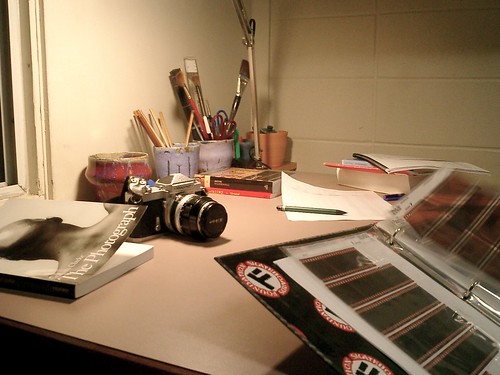Guest Post
When it comes to photography, the way you light your subject can make the difference between a lousy, good or great shot. Knowing which types of photography lighting to use is a skill that can take years to learn, but there are some simple steps that you can follow to improve your photography now.
Natural lighting is often the most flattering form of lighting, because it is the type of lighting we use in our everyday lives. However, you always want to avoid direct sunlight on your subject, which can make your picture look flat and/or create long shadows. Natural lighting comes from the sun, which you cannot control, but may be defused via clouds, windows, etc.
Some photographers like to use a deflector to bounce natural light outdoors. If the daylight can’t quite reach the subject, they will use a reflector or two to bounce and throw the light. When you’re shooting just using available natural light, there are times when you need a flash. A flash is a light source that you can aim and control. Flash is very fast and is not affected by shutter speed of the camera.
There are many different types of flash photography: on-camera flash, off-camera flash, manual flash, automatic TTL flash, direct flash and bounce flash. Photographers will often use bounce flash off the ceiling or off the wall to diffuse their flash so that it doesn’t directly hit the subject and create a hot-spot or red eye. The bounce is usually done from an off-camera angle, causing soft shading that shows shapes. By bouncing the light from your flash, you are basically doubling the distance the light travels to your subject. If you double the distance of the light too far, you may be underexposing your subject. In that case, increase your flash exposure compensation by 2 or 3 stops.
You can also attach a mini softbox to your speedlight flash to diffuse it from creating a direct, overexposed light. Many DSLRs and flash units can calculate the light power needed for a flash bounce. Some photographers will use white, translucent umbrellas for good diffusion. They will fire the flash through or aim the flash against the inside of the umbrellas and bounce it back on the subject. There are times when you should not bounce your flash: When there is nothing to bounce from, loss of light or if there is smoke present (which will create a picture of white).
Citations:
To learn more about lighting, please visit the resources section at LampClick.com.


Love this post. I am really going to have to pour over it later. I need to learn how to use my DSLR better.
great post!
I can’t believe how much I still have to learn!
Great tips! Sometimes I think my camera is smarter than me. 🙂
I’m a big fan of natural lightening because it seriously transform any photo from blah to WOW.
Great tips, there is so much for me to learn about flash…I never even use ot because I don’t have a clue.
Oh wow, I feel like a pre-k photog student!
Photography understanding is still something at eludes me.
Great post. I have been experimenting with different ways to take pictures indoors to get the best light exposure. I have been using the LightScoop which gives me better results.
I love natural lighting for photos I really do need to make a light box when I don’t have it espeically since it’s getting dark earlier